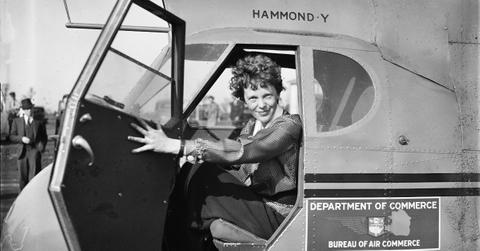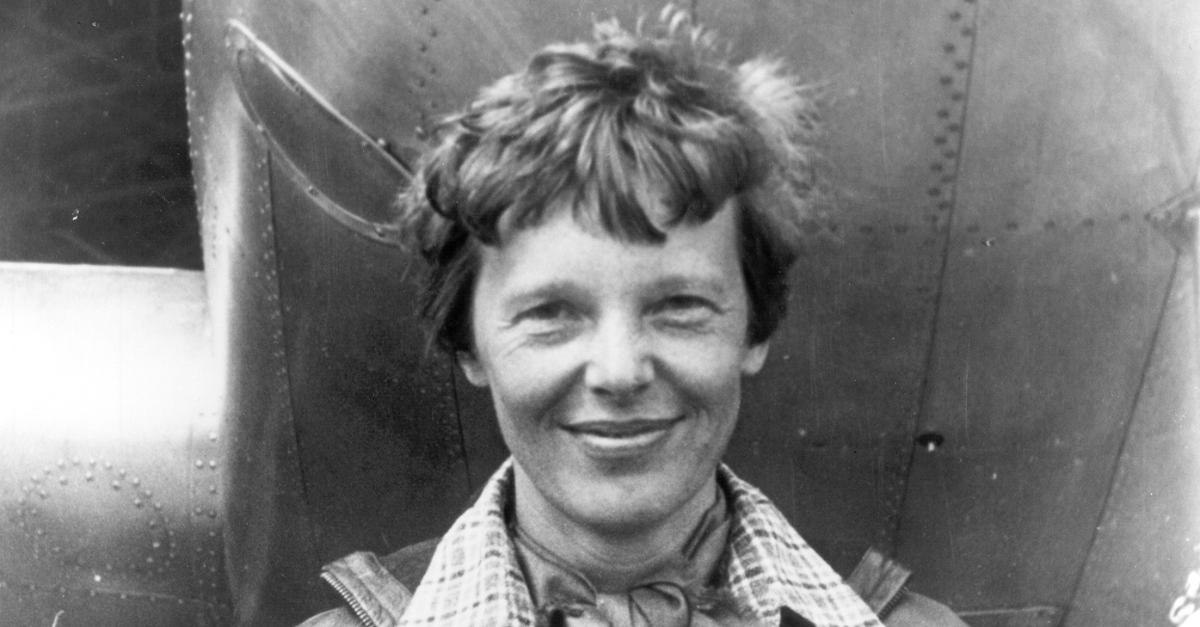Sorry to Ruin Your Day but It's Possible Amelia Earhart Was Eaten by Crabs
We'd love another theory.
Published July 3 2025, 2:15 p.m. ET

One of life's greatest mysteries is the disappearance of Amelia Earhart. The pioneering aviator was attempting to circumnavigate the globe when she and her navigator, Fred Noonan, vanished on July 2, 1937. Before she embarked on her voyage, Amelia was already a record-breaker. In 1932, she became the first woman to fly solo across the Atlantic.
It's easy to see why her next adventure would be traversing the globe.
Her first attempt ended in a non-fatal crash. The second and last started with little fanfare in Oakland, Calif., with her flight coordinator, Fred Noonan. From there, she stopped in Miami and on June 1, departed for South America.
After that, Amelia landed in Africa, the Indian subcontinent, and Southeast Asia, before arriving at Lae, New Guinea, on June 29, 1937. The duo disappeared a few days later.
There have been many theories about the ill-fated trip, though none are as strange as Amelia Earhart being eaten by crabs. Was she?

Was Amelia Earhart eaten by crabs?
Obviously, we are not suggesting that Amelia and Fred were attacked by giant crabs, a la Sharknado or similar. The theory is not about the circumstances of their disappearance, but rather an explanation as to why no bodies were ever found.
According to Smithsonian Magazine, in 1940, researchers found a partial skeleton that matched a description of the aviator. Here's the thing: it was on Nikumaroro, a remote atoll in the Pacific.
Is it possible that Amelia and Fred didn't crash into the Pacific, but perhaps tried to land on this tiny ring-shaped island? Here's where the crabs come in. Evidently, islands in the Pacific and Indian oceans are lousy with enormous coconut crabs that can weigh as much as nine pounds. In order to maintain such an impressive weight, these crabs have to eat a lot.
The eating habits of the coconut crab are not pretty. They prefer to eat at night, and when they do, the coconut crab uses its strong pincers to crack open coconuts, hence the name. Coconut meat is their primary source of food, but they've been known to snack on a molted exoskeleton or two.
Unfortunately, they've also munched on chickens and kittens. It's possible one or more of them pounced on a dead or dying Amelia.
The search for Amelia Earhart's plane continues.
Exactly 88 years after Amelia and her navigator went missing, the Purdue Research Foundation announced it was embarking on an expedition to find her plane. This is being done in conjunction with the Archaeological Legacy Institute and will start on Nikumaroro in November 2025.
"What we have here is maybe the greatest opportunity ever to finally close the case,” said Richard Pettigrew, ALI’s executive director. "With such a great amount of very strong evidence, we feel we have no choice but to move forward and hopefully return with proof. I look forward to collaborating with Purdue Research Foundation in writing the final chapter in Amelia Earhart’s remarkable life story.”
Amelia has a tie to Purdue University after she was recruited to serve as a counselor for women in order to provide career advice. She also worked with the university to prepare her plane for its historic flight.
"Today, as a team of experts try again to locate the plane, the Boilermaker spirit of exploration lives on," said Purdue President Mung Chiang.